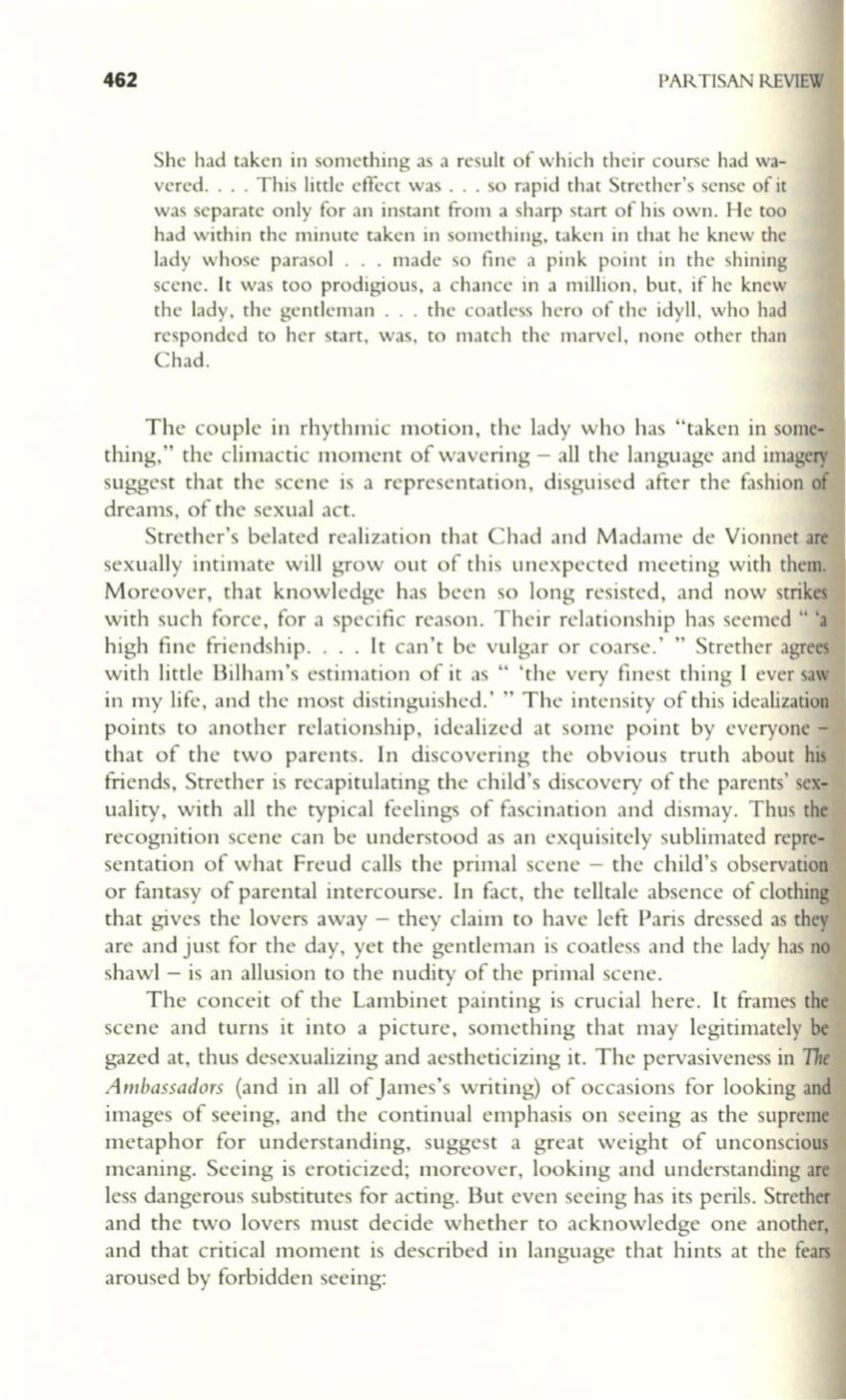
462
PAl~
TISAN REVIEW
She had taken in something as a result of which their course had wa–
vered.... This little effect was ... so rapid that Strether's sense of it
was separate only for an instant from a sharp start of his own. He too
had within the minute taken in something, taken in that he knew the
lady whose parasol ... made so fine a pink point in the shining
scene. It was too prodigious, a chance in a million , but, if he knew
the lady, the gentleman ... the coatless hero of the idyll , who had
responded
to
her start, was, to match the marvel, none other than
Chad.
The couple in rhythmic motion, the lady who has "taken in some–
thing," the climactic moment of wavering - all the language and imagery
suggest that the scene is a representation, disguised after the fashion of
dreams, of the sexual act.
Strether's belated realization that Chad and Madame de Vionnet are
sexually intimate will grow out of this unexpected meeting with them.
Moreover, that knowl edge has been so long resisted, and now strikes
with such force, for a specific reason. Their relationship has seemed" 'a
high fine friendship .... It can't be vulgar or coarse.' " Strether agrees
with little Bilham's estimation of it as " 'the very finest thing [ ever saw
in my life, and the most distinguished.' " The intensity of this idealization
points
to
another relationship, idealized at some point by everyone -
that of the two parents . [n discovering the obvious truth about his
friends, Strether is recapitulating the child's discovery of the parents' sex–
uality , with all the typical feelings of fascination and dismay. Thus the
recognition scene can be understood as an exquisitely sublimated repre–
sentation of what Freud calls the primal scene - the child's observation
or fantasy of parental intercourse . In fact, the telltale absence of clothing
that gives the lovers away - they claim to have left Paris dressed as they
are and just for the day, yet the gentleman is coa tless and the lady has no
shawl - is an allusion to the nudity of the primal scene.
The conceit of the Lambinet painting is crucial here. It frames the
scene and turns it into a picture, something that may legitimately be
gazed at, thus desexualizing and aestheticizing it. The pervasiveness in The
Ambassadors
(and in all of James's writing) of occasions for looking and
images of seeing, and the continual emphasis on seeing as the supreme
metaphor for understanding, suggest a great weight of unconscious
meaning. Seeing is eroticized; moreover, looking and understanding are
less dangerous substitutes for acting. But even seeing has its perils. Strether
and the two lovers must decide whether to acknowledge one another,
and that critical moment is described in language that hints at the fears
aroused by forbidden seeing:


